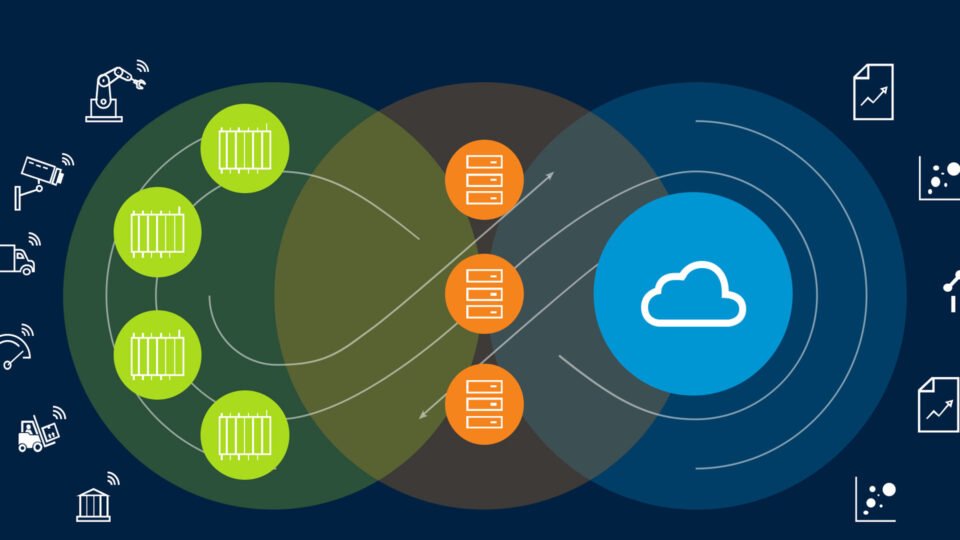- Nearly three in four expect to see up to a 25% increase from 2021 to 2022
- Replies from all parts of the organization (Information Technology, Operational Technology, Line of Business) cite competitive advantage as the main reason they are pursuing an edge strategy
- Open source and multi-cloud strategy is important as respondents are concerned about vendor lock-in
ZEDEDA, a leader in orchestration for the distributed edge, today announced that 77% of recent survey respondents expect to increase spending on edge computing projects in 2022.
The findings are part of the Edge Computing Landscape report, sponsored by ZEDEDA and conducted with EMC Research following ZEDEDA’s annual Transform conference in August. Survey respondents represented a diverse mix of decision-makers and implementers in various verticals.
When asked about annual spending today, 59% of respondents reported an annual budget of less than $500,000, but 77% said they expect to see much more or somewhat more spending for edge projects in 2022. Nearly three-quarters (74%) said they expected to see up to a 25% spending increase in 2022.
“It makes sense that as more data is processed at the edge of the network, more spending also moves to the edge,” said Said Ouissal, founder and CEO of ZEDEDA. “Companies see edge computing as a foundational enabler for digital transformation. As organizations modernize their OT and IT infrastructure to connect previously unconnected devices and systems to the cloud, edge computing enables these new architectures with flexibility, agility and security.”
Representatives from Across Organizations Recognize the Value of Open Source
Survey respondents identified their role as being in OT, IT or line of business, but one constant was that all three roles saw open source as important to their edge computing solutions. The highest number who deemed open source important came from OT (88%), with 83% of IT and 75% in line of business agreeing. Vendor lock-in was a bigger concern for IT and line-of-business respondents, but 69% of OT respondents also reported it as a concern.
Edge Computing As a Competitive Advantage
The survey indicated that edge projects are generally led by OT departments or business units that drive the core use case, with IT departments brought in to help determine how to scale the effort. When asked why their organizations were pursuing an edge strategy, all parts of the organization overwhelmingly responded that it was due to the competitive advantage it offered.
“With ongoing COVID-19 and supply chain issues driving the need for more rapid digital transformation, we are seeing companies gain even more confidence in the market and moving innovative projects forward more quickly than they have in the past couple of years,” said Michael Pearl, ZEDEDA’s vice president of global sales. “More edge nodes are being deployed and new data-driven solutions are launching because of the need to move compute closer to the physical world and increase overall resilience to prepare for future events.”
Different Perspectives on the Challenges of Deploying Edge Projects
While nearly all respondents said they have found getting a budget for edge projects challenging in the past, different departments had unique perspectives on why that was happening. IT and business groups described obtaining funding as significantly challenging, while less than half of respondents from OT groups felt funding was an obstacle. One potential explanation is that OT-led projects may have money or safety on the line, with operations that are firmly in the physical world and impact to the bottom line being more easily measured. Also, projects tied to specific business-critical use cases (e.g., safety) may have an easier time getting funding.
Other top deployment challenges cited were security, device management, physical deployment and having the necessary personnel skills. The complexity of edge computing, which often involves different types of hardware, applications, networks and physical locations, and is done at a scale ranging from hundreds to thousands of devices, often causes organizations to struggle with the transition from proof-of-concept to full deployment.
For more details on the survey and to download the full report, go to https://zededa.com/edge-computing-landscape-2021/.
Methodology
The survey was conducted this fall, with a total of 153 qualified respondents.
For more such updates and perspectives around Digital Innovation, IoT, Data Infrastructure, AI & Cybersecurity, go to AI-Techpark.com.

